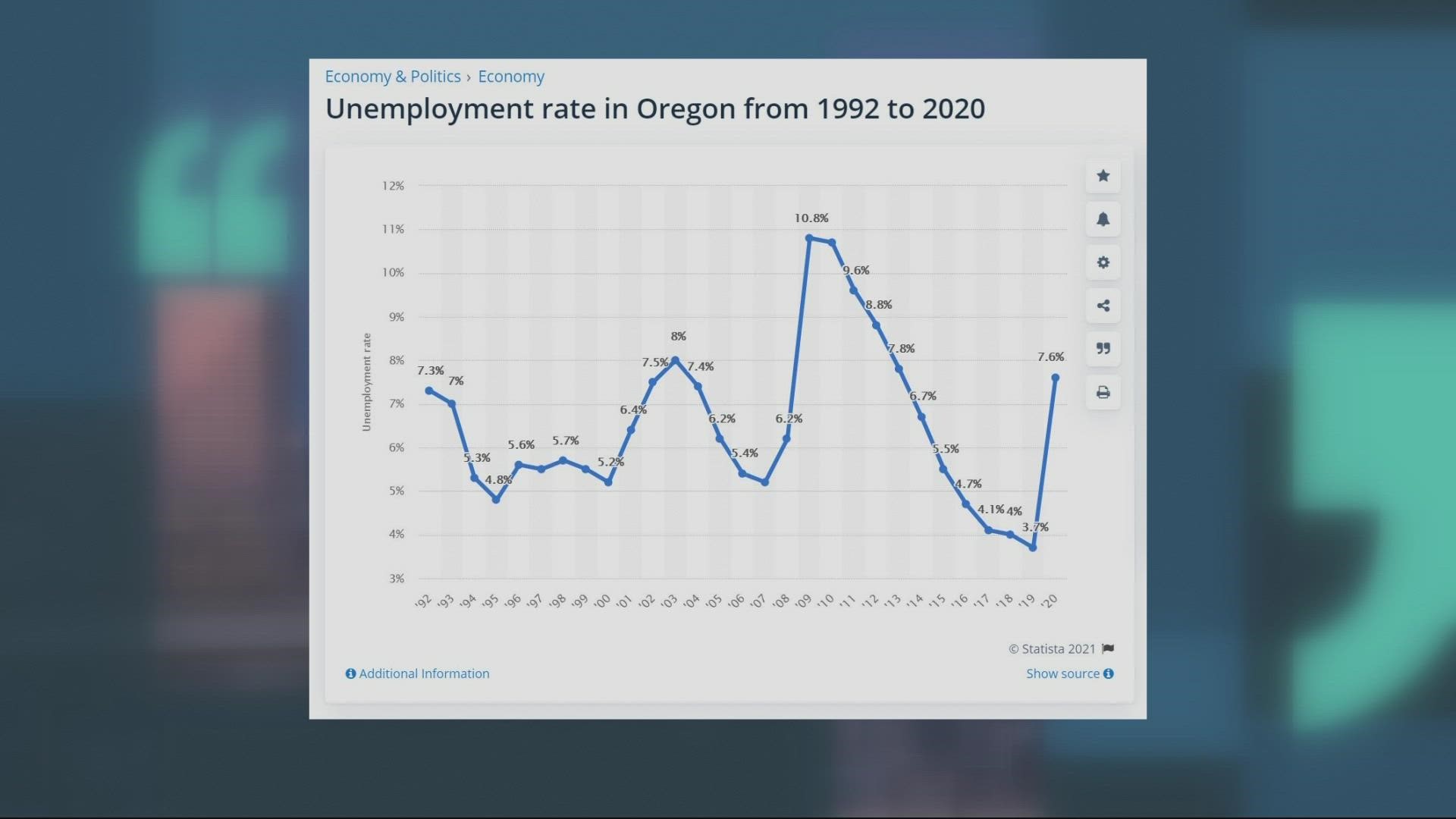PORTLAND, Ore. — Oregon's unemployment rate dropped to 4.7% in September, a rate approaching pre-pandemic levels, but employers are still having difficulty finding workers to hire.
A wide range of industries are still struggling to fill open positions, particularly in government — with schools among the most affected — and the service industry.
The state recorded a net job loss of 200 jobs in September after adding 8,900 jobs in August, per the Oregon Employment Department (OED). That loss was largely attributed to government job losses, concentrated in local school districts adding fewer employees than they typically would at the start of the school year, according to the OED. Districts across the state have started offering incentives and increased wages for positions with the most openings, such as substitute teachers and bus drivers. According to the state employment department, 102,000 Oregonians were unemployed in September.
Restaurants in particular are also facing a major staffing crisis. The Oregon Restaurant and Lodging Association said it needs 23,000 workers to fill openings at the businesses it represents.
The issue is complicated. Americans quit their jobs at a record pace in August, but many predicted that after enhanced pandemic unemployment benefits ended in September, service industry workers who had been collecting extra unemployment would return to the workforce, but that largely has not happened. Instead, industry workers feel burned out and frustrated with the state of restaurants.
A July story from Eater PDX shares multiple perspectives from current and former service industry workers who've chosen to find jobs outside the industry. They cited low pay, difficult working conditions, few benefits like health insurance and confrontations with customers angry about precautions to stem the spread of COVID-19 among the reasons they've left. In September, Eater PDX followed up with another article detailing customer attacks on industry workers.
Even before the pandemic, restaurant work has always been hard work. Irregular scheduling and unpredictable pay are difficult for workers seeking stability. For people with children, child care is also a major hurdle when you don't work a traditional 9 to 5 office job.
"We clearly have some child care issues across the state," said Jason Brandt with the Oregon Restaurant and Lodging Association. "It doesn't really matter what county you're in, we have an ongoing set of challenges connecting our employers with resources that are available to their employees to set up child care."
It's a problem significant enough to keep people out of the workforce.
"The reality is, we need to start looking at more creative solutions. Maybe there's ways to open up lodging spaces to create co-op child care facilities where we don't have enough supply. But I think all solutions and brainstorming ideas need to be on the table, because it's a significant issue that needs everyone to take their seat and kind of roll up their sleeves and figure this out," Brandt said.
Brandt said restaurant wages and benefits are high right now. Many businesses are offering bonuses and incentives to new workers. Even so, it will take time for the restaurant industry to recover.
Are you a service industry worker who has left the industry or has concerns about returning to work? Email The Story team at thestory@kgw.com.

